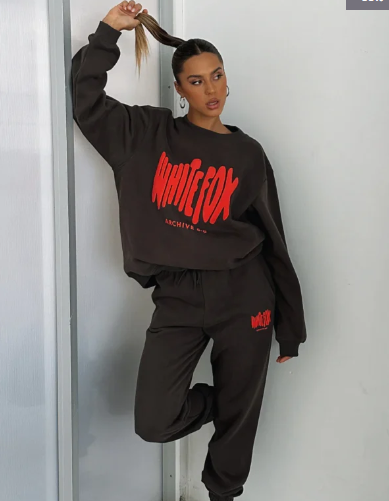1. Realism in Concept Art
Realism is one of the oldest and most popular styles in concept art illustration. This style focuses on representing scenes, characters, and environments with detailed accuracy, often inspired by real-world physics, lighting, and anatomy. Realism requires concept artist to have a deep understanding of anatomy, texture, and lighting to create believable artwork. Common in games and films that aim to immerse viewers in a believable world, realism requires both patience and a deep technical understanding to achieve high levels of detail.
2. Stylized Concept Art
Stylized concept art is the complete opposite of realism. It emphasizes exaggeration, abstraction, and unique interpretations rather than strict adherence to real-world physics. This style allows concept artists to explore different textures, exaggerated proportions, and whimsical details that wouldn’t necessarily work in a realistic setting. Games like The Legend of Zelda and animated films from studios like Pixar often lean towards stylized art, giving characters and environments a unique look that becomes instantly recognizable and iconic.
3. Fantasy and Sci-Fi Concept Art
Fantasy and science fiction are two genres that rely heavily on concept art illustration. Fantasy art allows artists to experiment with imaginative creatures, mystical landscapes, and magical elements, pushing the boundaries of creativity. Similarly, science fiction focuses on advanced technology, futuristic environments, and space exploration, providing famous concept artists the freedom to design unique worlds that captivate audiences. Sci-fi concept art often uses cooler tones and metallic textures, while fantasy art may lean on organic shapes and earthy tones.
4. Abstract and Surreal Styles
Abstract and surreal styles in concept art provide artists with an opportunity to explore the boundaries of imagination and creativity. This style focuses on bending reality and altering perception, often blending familiar elements with bizarre or dreamlike attributes. It’s popular in projects that aim to provoke thought or create a psychological impact. In this approach, the artwork concept may defy conventional rules of perspective or anatomy, giving concept artist the freedom to craft visual experiences that feel otherworldly.
5. Cartoon and Comic Styles
Cartoon-inspired concept art is characterized by its exaggerated features, bold outlines, and simplified details, a style seen in numerous animated series, films, and comics. Popularized by the comic industry, this approach is accessible and immediately engaging for a broad audience. Concept artists working in this style often focus on expressive features and playful proportions, which can add a lighthearted tone to characters and settings. Comic book-inspired concept art continues to evolve, finding its place in graphic novels, indie games, and even animated films with mature themes.
6. Dark and Gothic Art
Dark and gothic styles in concept art involve moody lighting, intense shadows, and often horror or macabre themes. This style can be seen in games and films that delve into themes of fear, mystery, and darkness. With influences from gothic architecture and horror art, this style tends to focus on ominous details, giving characters and scenes a haunting atmosphere. Dark fantasy and horror genres rely heavily on this style, offering concept artists the opportunity to explore creepy, disturbing imagery that taps into psychological themes.
7. Environmental Concept Art
Environmental concept art focuses primarily on the design of landscapes, cityscapes, and overall setting atmospheres, which form the background for characters and action. This type of artwork concept requires an understanding of geography, architecture, and even weather to create settings that feel alive. Whether it’s a dense forest, a post-apocalyptic city, or a futuristic space station, the environment plays a key role in establishing the mood and atmosphere of a story.
8. Minimalist Concept Art
Minimalist concept art is focused on stripping down elements to their essence. This style often uses clean lines, limited color palettes, and simple shapes to convey complex ideas or emotions. It’s used effectively in projects where simplicity enhances the impact, often requiring the audience to read between the lines. Some famous concept artists and studios use this approach for branding purposes, as it tends to create memorable, bold visuals that stand out.
9. Concept Art for Cinematic Storyboarding
Cinematic storyboarding in concept art focuses on breaking down scenes into panels, visualizing the sequence of events in a story. Storyboarding uses various styles, from loose sketches to detailed frames, and helps filmmakers plan out angles, lighting, and movement before filming. While the style itself may vary, the primary purpose of cinematic storyboarding is to create a visual guide for storytelling, giving directors and cinematographers a roadmap for the final production.
Tools and Techniques for Each Style
To bring these styles to life, concept artist use a wide range of tools, including industry-standard software like Photoshop, Blender, and Procreate. Depending on the style, the approach to lighting, shading, color choice, and texture application will vary. For instance, realism requires accurate shading and texturing, while stylized art may rely more on bold lines and exaggerated proportions.
Why Do Styles Matter in Concept Art?
Each of these styles has a unique role in shaping the story and engaging the audience. From adding personality to characters to establishing the mood of the environment, the choice of style in concept art illustration impacts how the audience perceives the entire piece. Each genre, setting, and character design needs a compatible style to convey the right message and evoke the intended emotional response.
Final Thoughts: Embracing Diversity in Concept Art Styles
Concept art is a multifaceted field that spans various genres, techniques, and styles. From realism and fantasy to surrealism and minimalism, the variety in concept art illustration enables artists to bring unique perspectives to each project. Whether creating a hyper-realistic environment or a stylized character, concept artist have the power to shape worlds and tell stories that resonate with audiences. Embracing this diversity not only enhances the storytelling but also opens new doors for famous concept artists to express their creativity in innovative ways.




